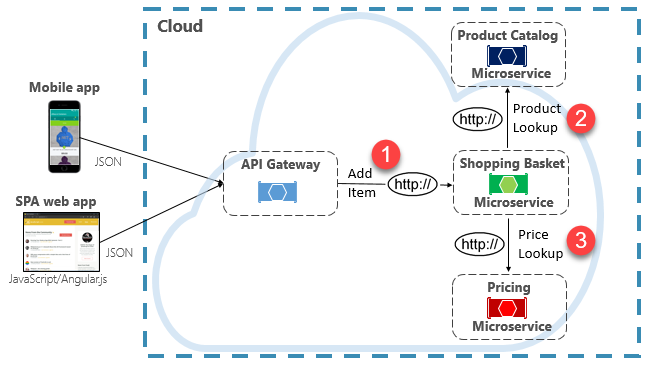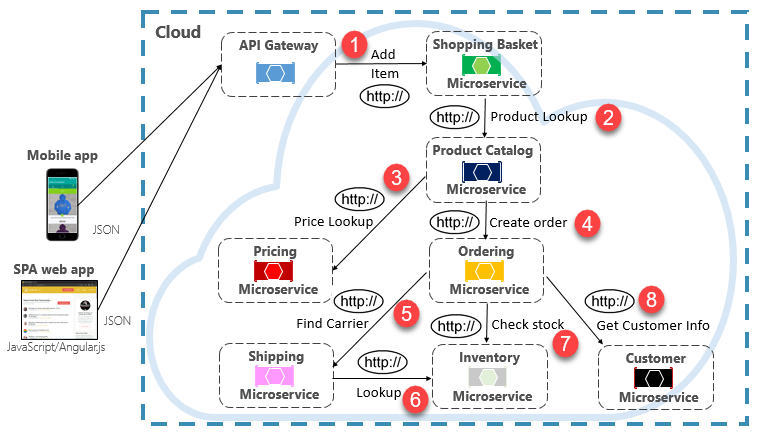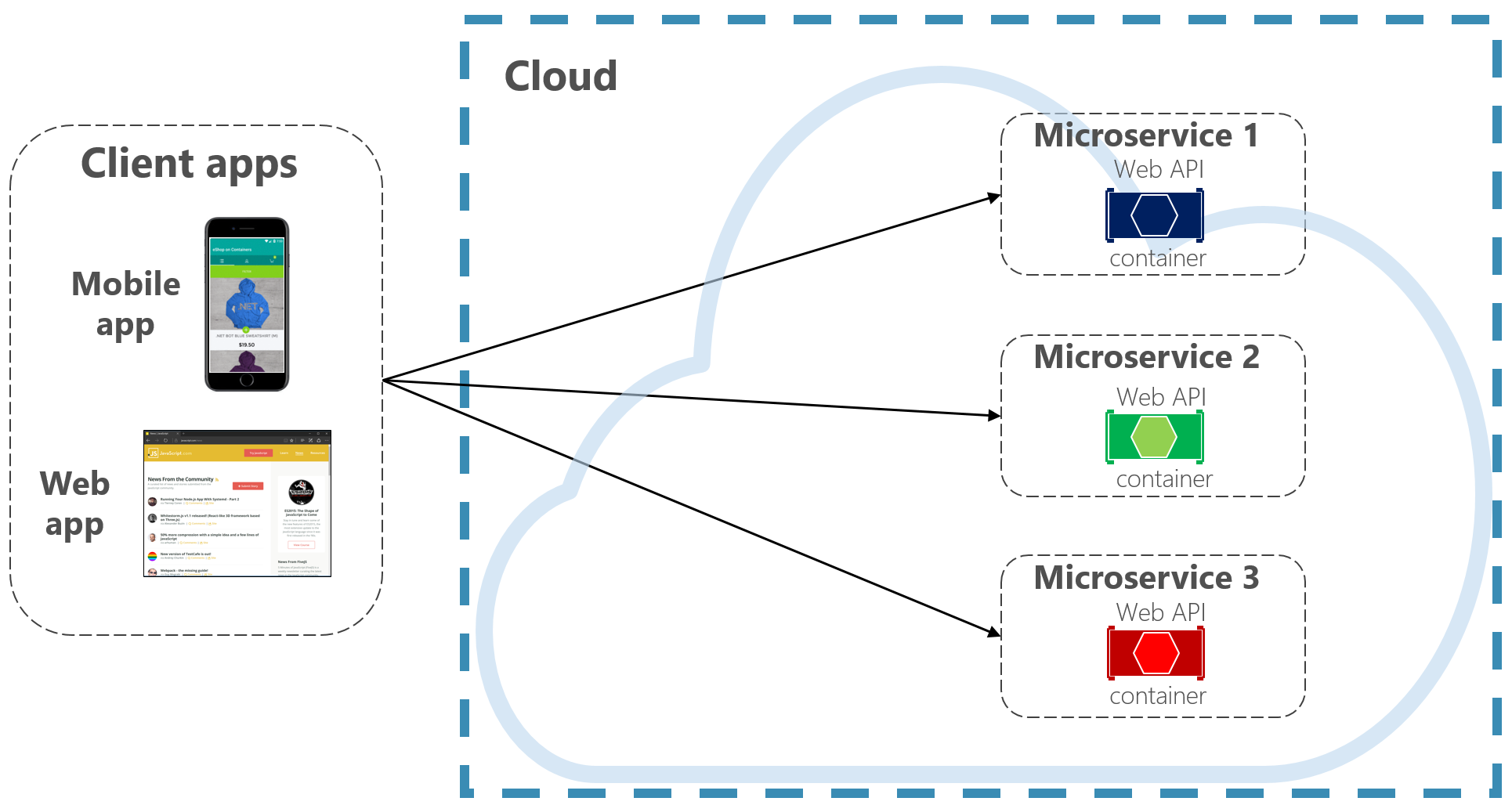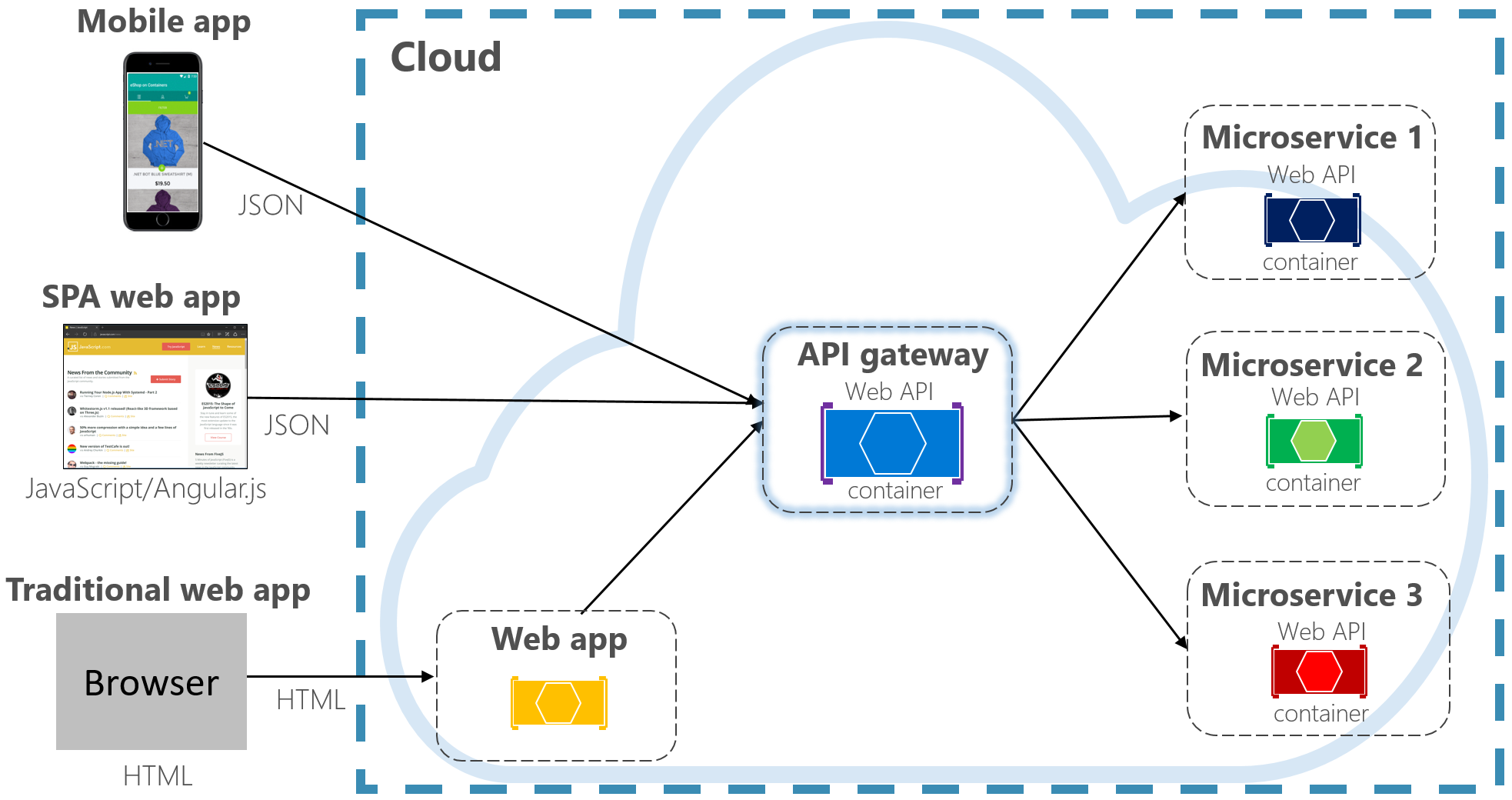The article is from Microsoft.
Moving from the front-end client, we now address back-end microservices communicate with each other.
When constructing a cloud-native application, you’ll want to be sensitive to how back-end services communicate with each other. Ideally, the less inter-service communication, the better. However, avoidance isn’t always possible as back-end services often rely on one another to complete an operation.
There are several widely accepted approaches to implementing cross-service communication. The type of communication interaction will often determine the best approach.
Consider the following interaction types:
- Query – when a calling microservice requires a response from a called microservice, such as, “Hey, give me the buyer information for a given customer Id.”
- Command – when the calling microservice needs another microservice to execute an action but doesn’t require a response, such as, “Hey, just ship this order.”
- Event – when a microservice, called the publisher, raises an event that state has changed or an action has occurred. Other microservices, called subscribers, who are interested, can react to the event appropriately. The publisher and the subscribers aren’t aware of each other.
Microservice systems typically use a combination of these interaction types when executing operations that require cross-service interaction. Let’s take a close look at each and how you might implement them.
Queries
Many times, one microservice might need to query another, requiring an immediate response to complete an operation. A shopping basket microservice may need product information and a price to add an item to its basket. There are many approaches for implementing query operations.
Request/Response Messaging
One option for implementing this scenario is for the calling back-end microservice to make direct HTTP requests to the microservices it needs to query, shown in Figure 4-8.

Figure 4-8. Direct HTTP communication
While direct HTTP calls between microservices are relatively simple to implement, care should be taken to minimize this practice. To start, these calls are always synchronous and will block the operation until a result is returned or the request times outs. What were once self-contained, independent services, able to evolve independently and deploy frequently, now become coupled to each other. As coupling among microservices increase, their architectural benefits diminish.
Executing an infrequent request that makes a single direct HTTP call to another microservice might be acceptable for some systems. However, high-volume calls that invoke direct HTTP calls to multiple microservices aren’t advisable. They can increase latency and negatively impact the performance, scalability, and availability of your system. Even worse, a long series of direct HTTP communication can lead to deep and complex chains of synchronous microservices calls, shown in Figure 4-9:



